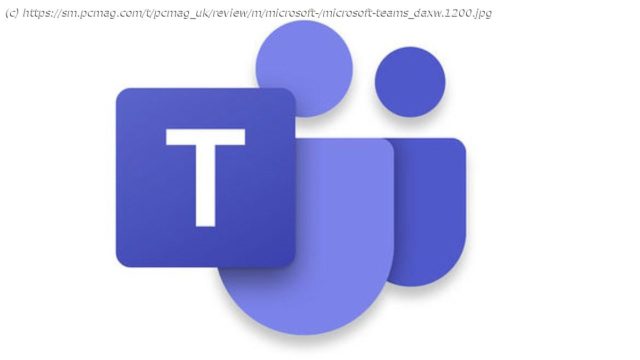Messaging, voice, and video conferencing built for Microsoft 365 users
Teams, the business messaging app from Microsoft, reminds me a lot of IKEA’s self-service section. It’s an insider’s space. If you work there and know how the system is arranged, like how the aisles and bins are numbered, you probably navigate it with ease. If you’re a customer coming down from the showroom, however, it could take a while to find the right aisle, bin, and shelf where you’ll finally find a nondescript box that hopefully contains what you need. Everything is in its place, so long as you know how to find it. Once you know what you’re doing, Teams can be a powerful tool for staying in touch. Teams and other remote-work collaboration tools are especially important to master now that many people are working from home and connecting with colleagues remotely. Whether its structure agrees with you may set the tone for your relationship with Teams. If it clicks, you’ll love this chat app for everything else it has to offer, from its long list of integration options to its ability to work seamlessly with nearly any other Microsoft 365 app. For added attraction, Microsoft has done significant work outfitting teams with video conferencing and voice over IP (VoIP) telephony features. Given its potential, Teams is a top choice, but only for groups already using Microsoft products. It’s not for everyone, though, and like a lot of Microsoft products that are highly customized before rolling out to an entire organization, how well it works depends a lot on the unique specifications. Like the IKEA warehouse, Teams is orderly, but also hyper compartmentalized. You may have to dive four layers deep (Teams > Team > Channel > tab) to find a conversation. Every time you create a new Team within Teams, the number of places you might have to go to find information or answer a question increases many times over. If you can’t get over this arrangement, the rest of the app will never make an impression on you. That first hurdle is just too high. With Teams, there’s a love-it-or-leave-it sensibility. Those in the leave-it camp might look to Slack, the Editors’ Choice in the team messaging category. Its design makes communication faster, more open, perhaps messier, but also more fun. What’s New in Microsoft Teams? Since we last reviewed Microsoft Teams, the product has seen a few little upgrades. One that saves people time and hassle is the ability to use templates to create new Teams. These templates come with premade channels, user settings, and installed apps for specific use cases, such as event management, crisis response, and so forth. Microsoft supplies templates that you can use out of the box or customize, and there’s an option to build your own templates, too. One thing missing is the ability to create private channels in the templates. You’ve long been able to set a personal status to let other people know when you’re available, busy, or temporarily away from your workstation. Now there’s an option to appear offline even when you’re logged in. That way, you can access information in your Teams account without telling anyone you’re online. Another recent update for multilingual folks is language-aware proofing. Teams figures out which language you’re using when you type and applies spellcheck for that language. It’s available in the desktop app only at this time. There’s also a simplified global notification setting, the ability to muffle background noises, and read receipts, which are enabled by default in group chats of up to 20 people. Admins can disable it. Finally, Teams has also beefed up its integrated video conferencing service, Meetings, which this article addresses in its own section. Microsoft Teams Pricing and Plans There are two ways to get a Microsoft Teams account. One is to sign up for a free account, which requires a Microsoft account, and the other is to have a Microsoft 365 Business or Enterprise account, where the app is included. The free Teams account requires a Microsoft account or ID of any kind, such as a login for Outlook.com. With this account, you can invite up to 299 more people to join you, although everyone must also have a Microsoft account to use the app. You get all the primary features and only miss out on unique integration with business Office apps, such as scheduled meetings, SharePoint access, and things of that nature. You also don’t get a full roster of support or security and compliance tools for admins. Due to demand during the covid-19 pandemic, Microsoft allows free users to have video calls on Teams that last up to 24 hours. That limit will revert to 60 minutes on July 1, 2021. Up to 100 participants can join a virtual meeting, and you get all the standard features such as screen sharing and custom backgrounds. The paid version of Teams that comes with Microsoft 365 adds all the tight integrations with Office apps, plus 24/7 support and business-grade tools for administration, security, and compliance. You can have up to 300 team members, unless you have the enterprise edition, which is good for as many people as you need. There are three versions of Microsoft 365 that include Teams; all require an annual commitment:Microsoft 365 Business Basic: $5 per person per monthMicrosoft 365 Business Standard: $12.50 per person per monthMicrosoft 365 Business Premium (enterprise): $20 per person per monthComparative Pricing Comparing these prices to the cost of other business messaging apps isn’t an apples-to-apples affair. The prices above are for bundles of software, not just Teams. In any event, to get a sense of the market, the average price hovers around $5 to $6 per person per month. That’s roughly what Flock and Glip by RingCentral cost. Twist by Doist is free, with upgraded paid accounts running $5 per person per month. Zoho Cliq is the budget pick in this category, charging around $1 to $3 per person per month, depending on the total team size. Slack costs more than just about any team messaging app we’ve reviewed, charging $8 to $15 per person per month, with discounts offered if you pay for a year upfront. Teams and Slack have other differences besides price, of course. Microsoft Teams’ Interface Microsoft Teams is easiest to use as a desktop app or web app. There are mobile versions for Apple and Android devices that work fine when you’re on the go, but the desktop and web apps are easier to navigate. In the desktop or web app, you see a far-left rail with primary navigation, a secondary left rail with additional navigation, and a large center window for interactions. The first layer is Activity, Chat, Teams, Meetings, Calls, Files, and any apps you’ve installed. There could be more or fewer options depending on your organization’s configuration, and you can customize the sidebar a little more by pinning your favorite apps and chats to the top. Activity shows a summary of activity in your account. Chat is for direct messaging. Teams is where you access the interactive space for messages. Meetings opens a space where you can either start a video meeting or schedule one for later (there are several other ways to start a meeting). Calls opens yet another space to make calls, whether video or audio. And Files is where you find files that you and others have uploaded.






